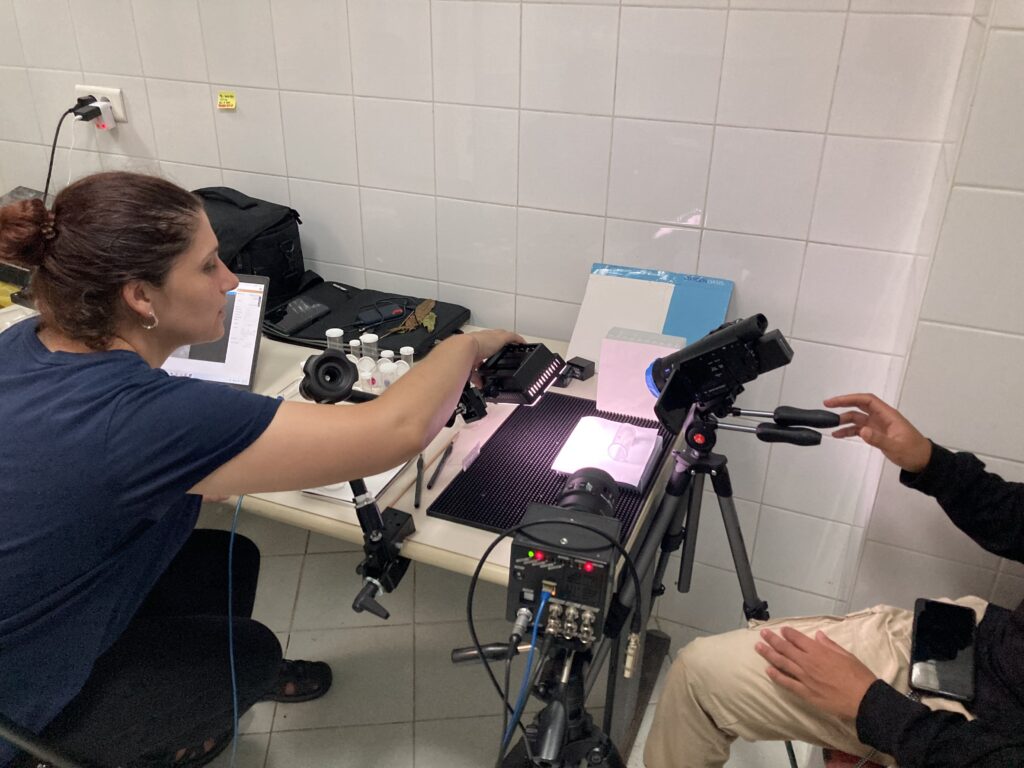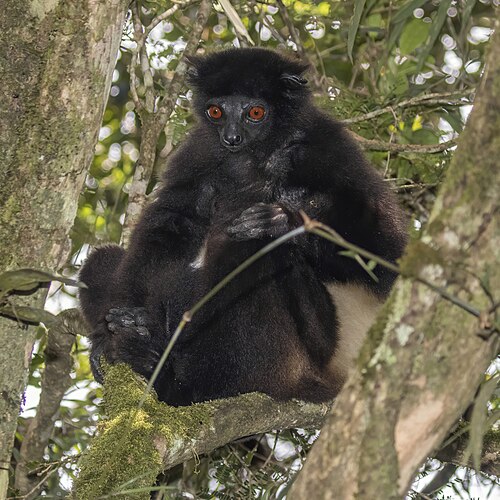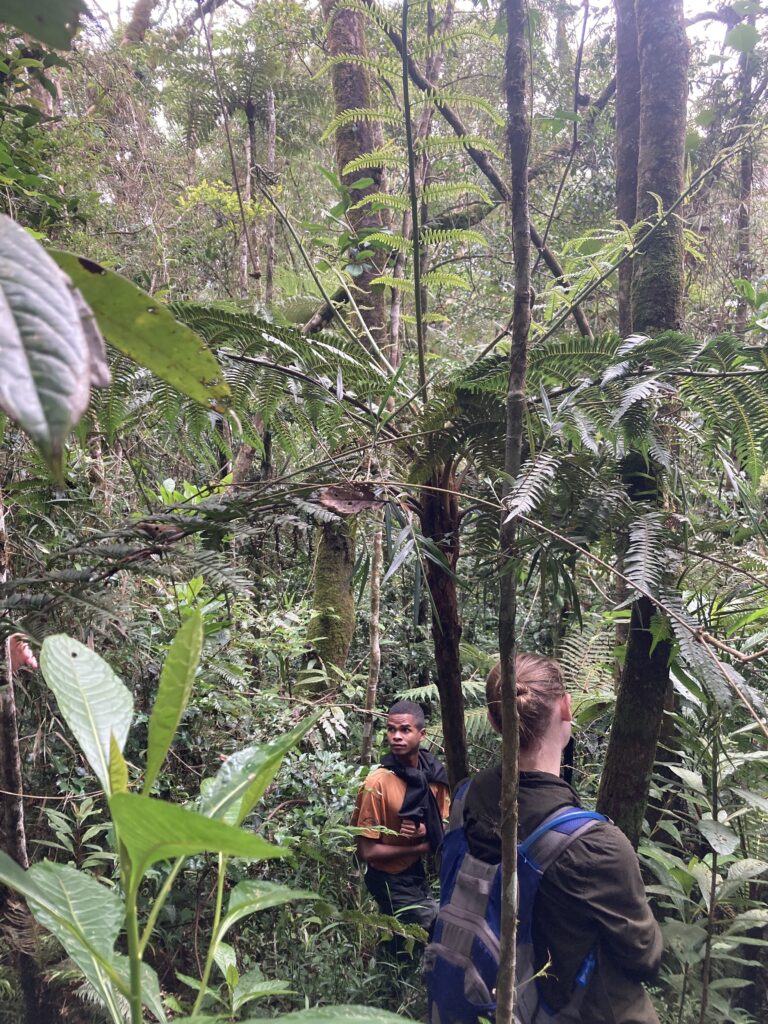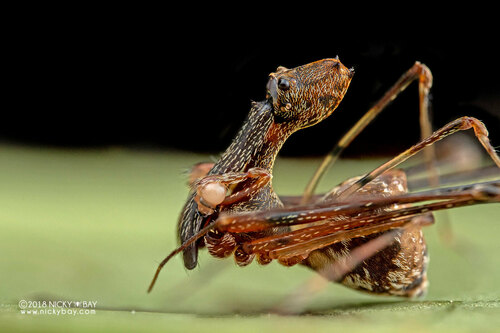In 1854, an interestinglooking spider was found preserved in 50 million-year-old amber. With an elongated neck-like structure and long mouthparts that protruded from the “head” like an angled beak, the arachnid bore a striking resemblance to a tiny pelican. A few decades later when living pelican spiders (Eriauchenius sp.) were discovered in Madagascar, arachnologists learned that their behavior is as unusual as their appearance, but because these spiders live in remote parts of the world they remained largely unstudied—until recently.
I met Maria here at Centre ValBio where she is collecting pelican spiders from a remote rainforest site with her Malagasy assistant Misra. Back at the lab here they nurture 200 some spiders in vials, feeding their wards other spiders. It’s like a miniature livestock farm. Using a high speed camera they record how the pelican spiders prey on other spiders. It is a quite complex functional morphology study in coordination with the Smithsonian Institute where Maria is employed.
These spiders, also known as assassin spiders, will follow the silk draglines of other spiders, find them, and well – eat them. Maria’s work in the remote rainforest involves spending many hours holding thin metal sheets below shrubs, beating the shrubs, and sorting through the debris for these very tiny critters. It’s a lot of work. The first time I met Maria at dinner she had just returned from the field “Oh, my arm hurts from swinging a stick all day”, she noted.

On the other end of the animal size spectrum is the Milne-Edward’s safika (Propithecus edwardsi) , a large lemur found in Ranomafana National park and studied by MJ, a young woman and PhD student. MJ had studied this species for 6 months in 2024 and is a protégée of Dr. Patricia Wright, who facilitated the designation of the park and CVB.
This species has a typical Propithecus body shape with orange-red eyes and a short, black, bare face ringed by a puffy spray of dark brown to black fur. The majority of its coat is dark brown or black long silky fur, but on the center of the sifaka’s back and flanks is a brown to cream colored saddle shaped area which is divided in half by a line of dark fur along the spine.

MJ’s work has revealed a unique behavior of this species not observed outside Ranomafana. Up to now, it was thought that a mother is the sole provider of care for her offspring. But MJ has found that here in Ranomafana, females will swap care and sometimes nurse the young of another female. The reasons why are still under investigation but it may have to due with quality of habitat and food availability. MJ is working with other lemur researchers who are studying the vegetation and lemur feeding strategies. Their combined work may lead to a better understanding of this unique parental behavior.

Both of these young women are leading difficult field investigations and complicated data analysis processes. I mean – it’s a rainforest here so often can be damp, the terrain is steep, and the vegetation dense. It is not an easy place to conduct field work. The accommodations at CVB offer good food, a comfortable bed, and hot water (most of the time) which takes the edge off a long field visit.
I was quite impressed about these researchers’ dedication and passion to contribute to the scientific knowledge of the Madagascar rainforest, and to carry on a long legacy of women-led science here at Ranomafana.
